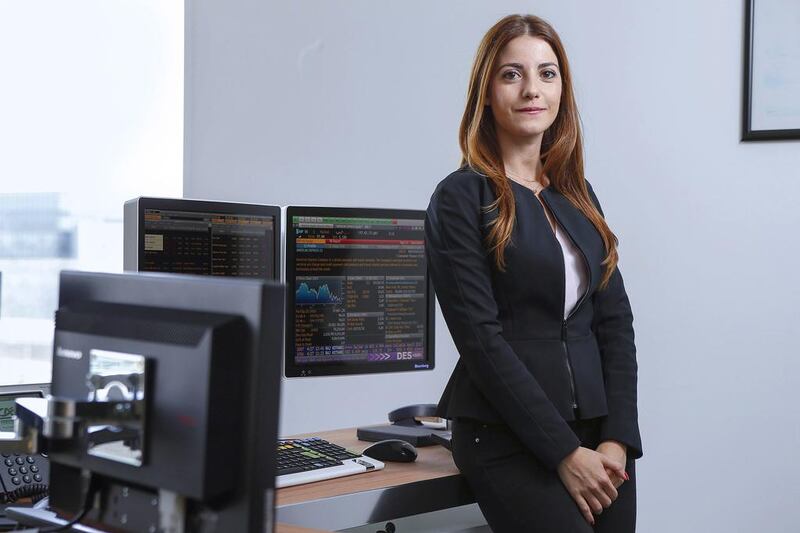Name: Christiane Nasr
Position: Senior investment adviser for the Middle East at Crédit Agricole Private Banking
Years in the investment industry: 9
Based: Dubai
What is the asset class and geography you are focused on?
I am a multi-asset investment adviser with a focus on fixed income markets in the GCC and Asia.
What is the outlook for the month ahead?
Global economic activity rose at the fastest pace for six months in March. The continuing expansion could lead to the markets being positively surprised by a large rebound in the second-quarter GDP in the US. We continue to expect the US to grow twice as fast as Europe; Japan and Europe to grow at a similar pace; Switzerland to match German GDP; Brazil and Russia to face outright recession and India to grow faster than China.
What are the main risks, either upside or downside, to the outlook?
The main current risk factor is the possibility of a Greek exit from the euro zone, thus the dollar remains a buy-on-dips against the backdrop of a Fed rate hike at the year-end. The prevailing volatility arising from the Grexit fears is providing us an opportunity to build attractive entry points in European corporate bonds and to move down the rating spectrum selectively, maintaining our long B versus BB trading bias in Europe. Emerging markets bonds are also benefiting from supportive technicals because of a likely delay in US Federal Reserve rate hike expectations until December. We are neutral on Middle East corporate bonds which have been lagging the broader rally but are showing signs of a stable upwards trajectory since the beginning of the year despite the swings in oil prices.
What is the best investment at the moment?
European indexes are among the world’s best performers so far this year because of the massive quantitative easing programme introduced by the European Central Bank. One lagging sector since the bottom of 2011 is the European banking sector, giving a total return of 19.11 per cent (since the bottom of 2011) against 74.89 per cent for the broader Euro Stoxx 600 Index. This trend has been reversing in the last few weeks as the QE seems to be working well and the banks are finally starting to lend to consumers and smaller enterprises. The latest TLTRO [long term refinancing operation] showed that European banks borrowed €100 billion. This is a fantastic growth driver for the sector which continues to trade with a large discount versus its historical average (0.9x price/book versus 2x in 2007) while the return on equity is finally picking up after many years of negative or zero returns. Now that the banks have cleaned their balance sheets and started to have excess capital, shareholders’ returns will be a priority in the coming years.
What was the best investment you have been involved in?
The biotech sector has given a tremendous performance over the past five years, and we tend to believe the bull market is far from over. We started to actively recommend the sector in July 2013 and since it has returned 113 per cent up to now.
What was the worst?
We adopted a cautious approach when it came to reducing our exposure to the mid-to-long end of the curve in anticipation that the 10-year US Treasury would rise to a more sustainable low-to-mid 2 per cent level. This prudent rationale has been translated into our approach to reduce duration in bonds portfolios and focus only on the short end of the US bond curve. This careful move has led us to miss some rally in the long maturity bonds as the 10-year US Treasury yield went down to as low as 1.63 per cent this year.
siyer@thenational.ae
Follow The National's Business section on Twitter






